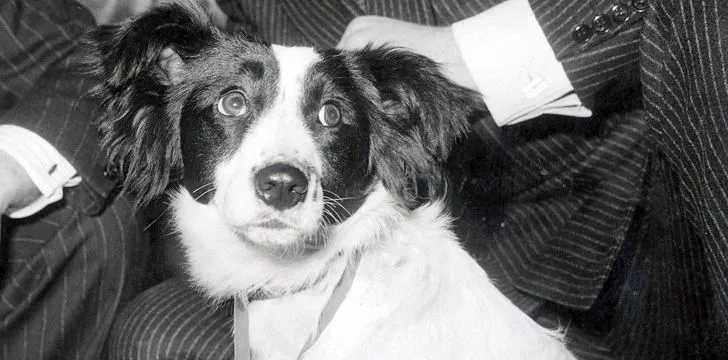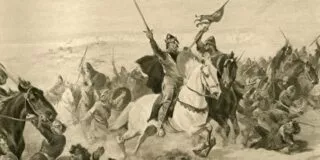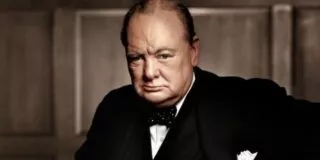It’s a dog-eat-dog world out there when somebody managed to steal the World Cup trophy right under the noses of guards!
It was then later discovered by a dog named Pickles and brought back to its rightful place.
You must think I’m barking mad… but it’s totally true.
Sit back and listen to this fascinating ‘tail’ (pun intended).
World Cup Finals 1966.
It was March 20, 1966, three months before the World Cup finals were set to commence in England for the first time in World Cup history.
The World Cup trophy, also known as the Jules Rimet Trophy (a different trophy to the one used nowadays in the World Cup), was on display in a glass cabinet at an exhibition in the Methodist Central Hall at Westminster.
How many men does it take to change a lightbulb?
Five guards had been detailed to keep a constant watch on the trophy as it sat on display. However, on that auspicious Sunday the guard stationed next to the trophy had the day off work.
With three of the other four guards enjoying a lovely cup of tea, there was only the single guard George Franklin on watch, who discovered the display case at midday only to find that the famous Jules Rimet Trophy had been stolen.
For the Football Association (FA), and Sir Stanley Rous, the English president of FIFA, this was the type of nightmare scenario one has when already locked in a terrifying nightmare.
An investigation begins!
With a quick call to the Fuzz, an investigation into the theft was triggered.
Now, we of the modern world have to bear in mind how hard a crime like this would be to solve in the 60s: scarce CCTV cover – if any, no traceable mobile phones or internet chatter to be monitored, no social media campaigns to help search for a suspect.
Detective Inspector Bill Little took witness statements from Frank Hudson, a senior guard on duty, and Margaret Coombes, a woman attending a Sunday-school service in a different part of the hall, both of whom said they saw a man loitering by the gents’ toilets that day.
Even though their separate descriptions of said shifty gent lurking by the loos differed, the police decided they were looking for just the one thief.
Keep it swept under the rug.
Whilst this was occurring, the FA attempted to deal with the crisis themselves. Before news of the theft broke out into the public consciousness, FA secretary Dennis Follows visited a silversmith named George Bird at his workshop on Fenchurch Street.
Follows asked Bird to recreate the Jules Rimet Trophy from the same solid gold as the original version, telling him nothing else but to keep his lips sealed about it at all costs.
Only a handful of people, including English president of FIFA Sir Stanley Rous, knew about this.
You’re in the dog house now!
Once news of the theft broke out and became public, Scotland Yard was flooded with a plethora of prank calls. One man rang the police to say his clock had told him the trophy was in Wicklow, Ireland.
A Susanna Bell in Chile called to say “a colored man” was behind the theft, and a German guy named Adolf Hieke sent a photo from a German newspaper with an ‘X’ marking a man he believed was behind the theft. Trolling before the advent of the internet was also rife, as it would appear.
As you can imagine, at this point the Metropolitan Police had become an international laughing stock, and as such Bill Little handed the case over to the specialist Flying Squad’s top man, Detective Investigator Len Buggy.
Investigator given a new lead.
Len caught a break in the case when Chelsea FC and FA Chairman Joe Mears was phoned by a guy calling himself Jackson, telling him ‘There will be a parcel at Chelsea football club tomorrow. Follow the instructions inside.’
On the Wednesday after the theft, in true thriller crime story fashion, the package arrived containing part of the Jules Rimet Trophy along with a ransom note demanding £15,000 in five and one pound notes.
The note, in its entirety, read: “Dear Joe Kno no doubt you view with very much concern the loss of the world cup… To me it is only so much scrap gold. If I don’t hear from you by Thursday or Friday at the latest I assume it’s one for the POT.”
Jackson then called to confirm that Mears had received the parcel. “Give me £15,000 on Friday and the cup will arrive by cab on Saturday.” As per Jackson’s request, Mears posted a message in Thursday’s edition of London’s Evening News saying “Willing to do business, Joe.” However, against Jackson’s wishes Mears informed the police. Now the hunt was well and truly on.
After meeting with Mears, Len Buggy planned to meet with Jackson, armed only with £500 in notes and the rest of the ransom made up from newspaper. Despite the fact that the sting ended up a bust, on Buggy’s part, Jackson was still captured by the back-up team as he tried to escape.
Jackson the thief turned out to be Edward Betchley, a 46-year old former military man who had served during World War II in Egypt and was discharged from the military on amicable terms in 1946.
With only one prior conviction in 1954 for receiving tins of stolen corn-beef, it was suspected that Betchley wasn’t exactly a big-time heist mastermind – something he protested to police at the time of his capture and subsequent questioning.
Betchley said he was only a middleman paid £500 for his part and that the real thief went by the name “The Pole.” To this day it still isn’t clear as to whether or not “The Pole” existed.
Betchley was incarcerated whilst the hunt for the Trophy and “The Pole” continued, and that’s when this story took its most remarkable turn.
Found at long last.
Two days after the capture of Edward Betchley, seven days after the Jules Rimet Trophy had initially been stolen, David Corbett popped out across the road to make a phone call at the public telephone kiosk. With David was Pickles, a mongrel dog given to him by his brother four years earlier due to his tendency to chew on things – chiefly furniture and parcels.
Corbett put Pickles on his lead and tied him up outside the kiosk, making his call.
When he came out, unsurprisingly, he found Pickles chewing at a package tightly bound in newspaper and dropped by the wheel of a neighbors’ car.
Cursing, Corbett ran up and grabbed the parcel off Pickles. He was surprised by the seemingly innocent parcel’s weight, and that’s when he saw it. Like Charlie Bucket unwrapping that beautifully fateful bar of Wonkers, Corbett saw gold glinting at him from beneath the dull wrapping.
He tore at the newspaper and saw a woman holding a dish over her head, with disks below engraved with the words ‘Germany, Uruguay, Brazil’ and – once again, much like Charlie Bucket – he went running home, all the way home. “I’ve found the World Cup! I’ve found the World Cup!” He exclaimed at his bemused wife.
Corbett immediately took the Jules Rimet Trophy to the police, where he was questioned as a prime suspect until 2:30am, having to then turn in for work at 6am.
Whilst the mystery as to how the trophy ended up there was never solved, Corbett was eventually deemed innocent and Pickles was a hero, gaining national fame overnight.
Pickles find leads to fame.
Pickles went on to star in the feature film The Spy With The Cold Nose, and he also appeared on Magpie, Blue Peter and a whole host of other shows. He was made Dog of the Year and awarded a year’s supply of Spillers dog food and also offered the chance to visit Chile, Czechoslovakia and Germany.
On the evening of England’s historic 4 – 2 victory over Germany in the World Cup final, Pickles and Corbett went to the after party and hung out with the victorious team at the Kensington Hotel.
Corbett also enjoyed a £3,000 reward, which bumped up his £100 life savings to help him buy the house he lived in for £3,100, which became Pickles’ eventual resting ground when he passed into the next world.
Although it was never confirmed whether “The Pole” existed or was still a threat, all that mattered was that the World Cup had been found: Pickles was a dog of luxury, Corbett had his house, and football had finally come home.











